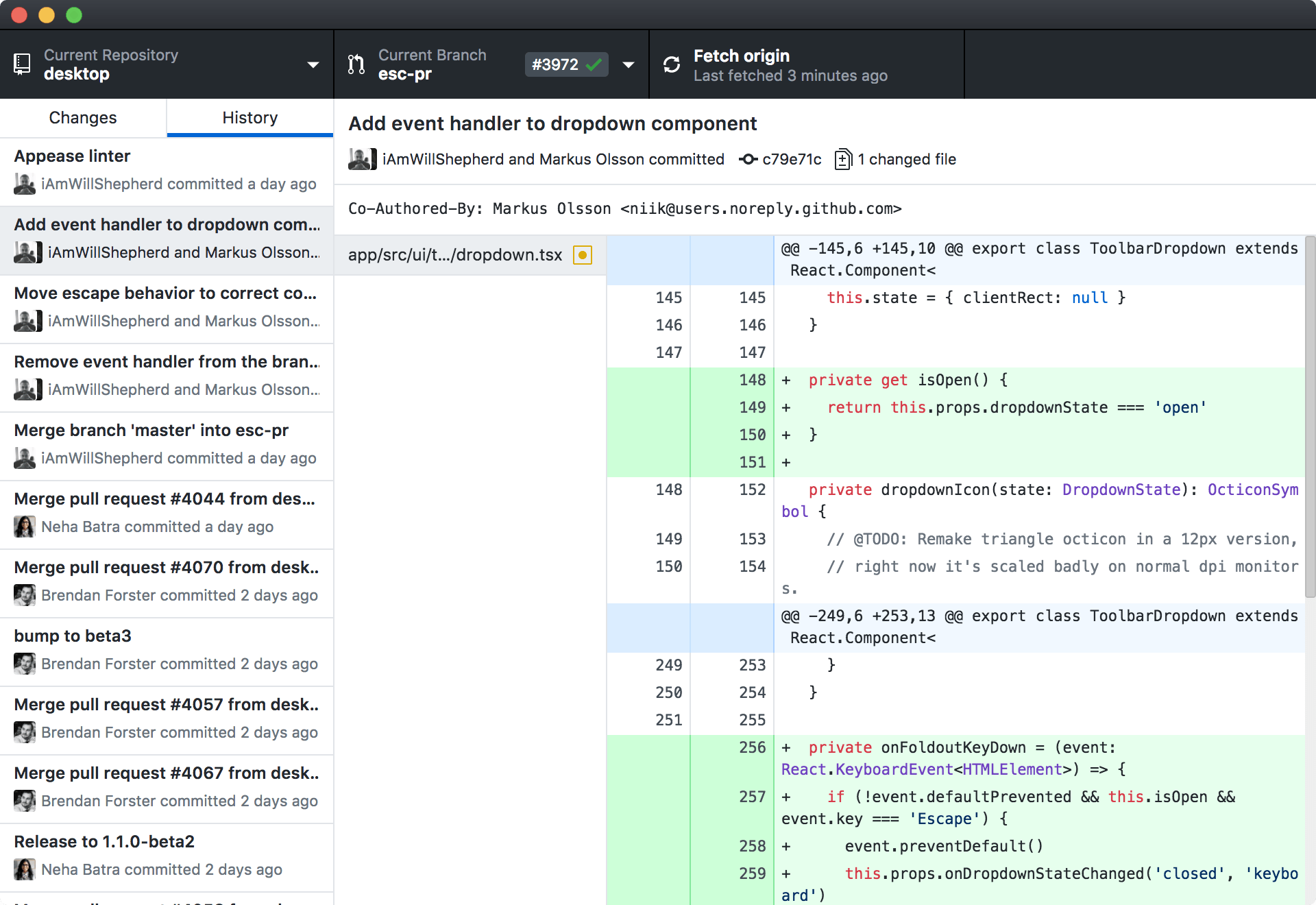

- #GITHUB DESKTOP FETCH ORIGIN INSTALL#
- #GITHUB DESKTOP FETCH ORIGIN VERIFICATION#
- #GITHUB DESKTOP FETCH ORIGIN CODE#
- #GITHUB DESKTOP FETCH ORIGIN PASSWORD#
You could also make bulk code updates in few clicks irrespective of the number of directories and files. Using GitHub Desktop client, you can easily manage the codes locally. Authenticate GitHub to push the changesġ5. Click on “Save and retry” to push the changes to git repository. You need to pass the valid credentials to authenticate the repo. Click on “ Commit to Master” Commit to Master branchġ3. Add meaningful comments to commit the changes. You could also copy directories and files to that path to upload to GitHub repository. It will automatically detect the code changes. Let’s make some changes on the README.MD file to test. Click on “Show in explorer” to see the files and folders on the repo. It just displays that, we haven’t made any local changes so far. Once the repository is cloned, you could see the following screen. Click on clone to pull the repository to local path. Enter the copied repo URL and select the local directory path. In Desktop GitHub, click on “Clone a repository from the Internet” Desktop GitHub – Clone RepoĨ. Copy the GitHub repository URL from webpage.

You could also opt out sending periodic usage statistics to GitHub. Click Finish complete the local configuration. Just enter your name and email address to configure locally GitHub Desktop – Configure Gitĥ. I have selected “skip to continue” to manually manage the repository. You could also directly logging in to existing GitHub account to manage the repository. Once the GitHub is installed, you will get the welcome page like below.
#GITHUB DESKTOP FETCH ORIGIN INSTALL#
Click on the downloaded executable to install it. You could also upload the codes directly using GitHub web-GUIġ. The desktop client can be installed with normal user privileges. Desktop GitHub Client is one of the tools which can be used to manage the code from your laptop/desktop effectively. GitHub continuously offers many tools to manage the codes effectively. I tried removing all files in the GitHub folder where the installation was done and then reinstalling the GitHub Desktop app, but saw the same behavior.GitHub is a web-based version control platform to manage the codes. To check for commits on the remote branch, click Fetch origin. I have ruled out the possibility of all the 5 error messages the interface shows me.įurthermore, if I uninstall GitHub Desktop and reinstall it, the installation interface does not ask me for any login, i.e., it does not completely delete all files during uninstallation (and perhaps uses some old credentials). In GitHub Desktop, use the Current Branch drop-down, and select the local branch you want to update. When I try "Fetch Origin" or "Push" from the GUI of the GitHub Desktop, it shows me the following However, the commands and work perfectly fine when I run them through the command prompt i.e.(Repository -> Open in Command Prompt)Ī clear and concise description of what the bug is. I am unable to pull, push for a private repository through the GitHub Desktop in … terface. Error calling StartServiceByName for : Failed to execute program : No such file or directory If I choose to sign in browser (seems the only option…), the error appeared.

Check the documentation of your repository hosting service.
#GITHUB DESKTOP FETCH ORIGIN PASSWORD#
If you used username / password authentication, you might need to use a Personal Access Token instead of your account password.
#GITHUB DESKTOP FETCH ORIGIN VERIFICATION#
If you use SSH authentication, ensure the host key verification passes for your repository hosting service. If you use SSH authentication, check that your key is added to the ssh-agent and associated with your account. Check the repository settings to confirm you are still permitted to push commits. You do not have permission to access this repository. You may need to log out and log back in to refresh your token. You are not logged in to your account: see File > Options. Then later I found this: Authentication failed. I follow this to set the default browser as chrome, as disable the required password whenever boot the computer.


 0 kommentar(er)
0 kommentar(er)
